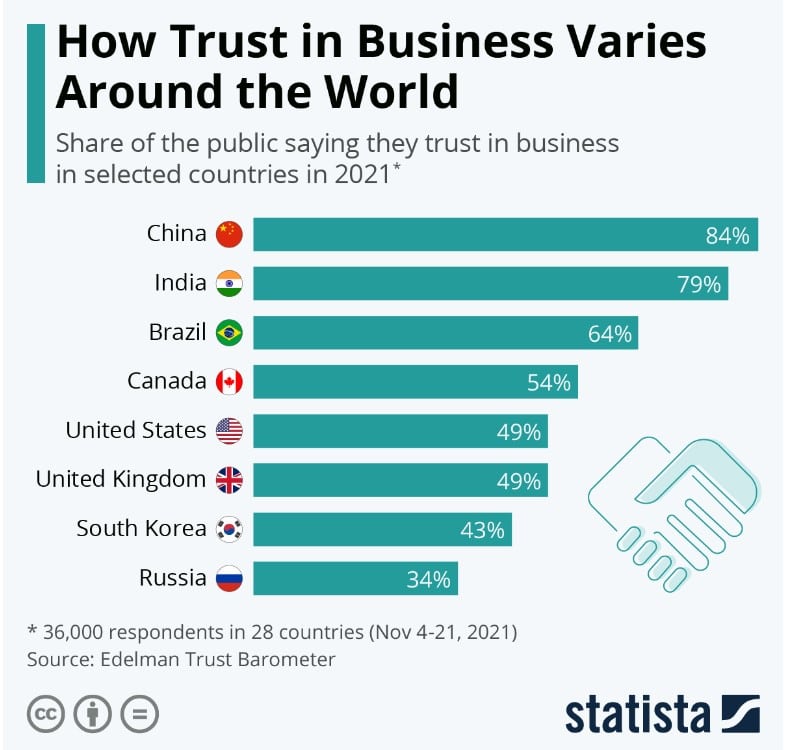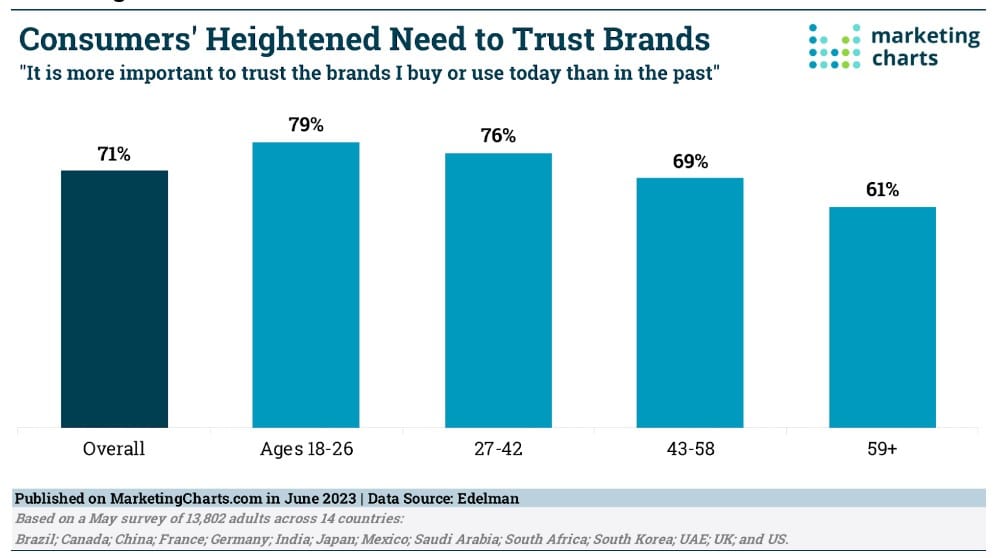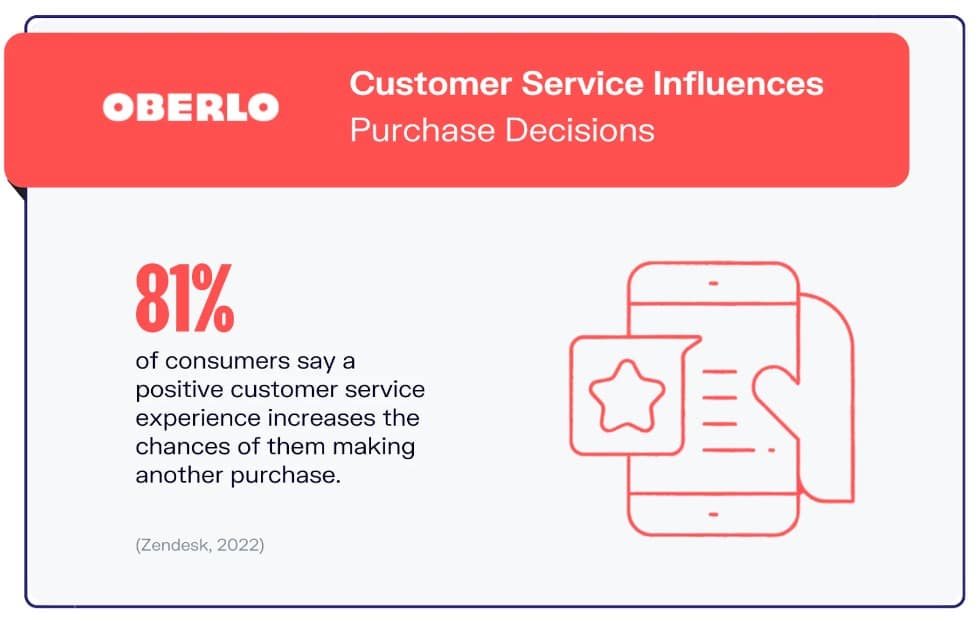Mistakes happen, both in life and in business. However, in business, some of those mistakes can lead to customer churn and to all-important trust being broken. If your customer churn rate starts rising above the acceptable averages of 2-8 percent (for B2C businesses), then you really need to start worrying and look at what’s causing it.
There can be many reasons why you lose your customers’ trust. It may be down to simple mistakes or it may be down to faults that need to be remedied.
The important thing to note is that it happens and that knowing how to regain customer trust has to be something you actively pursue. Strategies that attempt to regain customer trust can be as important as strategies to attract new customers.

Screenshot taken from Statista.com
Reasons customers can lose trust in you
As mentioned, an important relationship based on trust can be broken because of differing reasons. Having some ideas of the most common reasons can help you focus on issues and can help you start working on how to regain customer trust.
You also need to remember that unhappy customers may leave negative comments on social media that can damage your brand reputation.
It may surprise you that some issues are easily remedied while others may need more significant changes to the way you do things.
- Poor product quality. Customer expectations are everything, and if your products don’t meet those expectations—or their needs—then any trust they had in your organization could be damaged, and they will take their business elsewhere.
- Customer service. Even when a product meets a customer’s expectations, poor customer service may cause some damage. For ecommerce companies, customer service agents are the front line troops. If they are inefficient, impatient, or rude, you could see a spike in your customer churn rates.
- Indifference. Remember, customers provide the revenue that can make your business thrive. They might go elsewhere if treated indifferently, so customer appreciation is crucial to customer retention. Indifference can lead to mistrust, so this can be a major issue. And remember, good retention and social listening can lead to more brand ambassadors.
- Lack of personalization. You’re not expected to be friends with your customers, but you are expected to build—and maintain—a good relationship with them. If you don’t use a customer relationship management tool (CRM) or other customer database tools, then every conversation will be like a new one and long term customers don’t like that.
- No loyalty rewards. You already know the benefits of good customer retention, such as lower CACs (customer acquisition rates) and jigger CLVs (customer lifetime values). If you don’t have some form of loyalty scheme for longer-term customers, then they are going to look for a business that does recognize their loyalty.
- Honesty. As mentioned, mistakes happen, but how you deal with them may adversely affect the relationship with your customers. If you don’t take responsibility for your mistakes and don’t attempt to solve any issues caused, then customers may perceive you as being dishonest.
Of course, there can be many other reasons why customers lose faith in your business and they’re not always trust-based. Maybe your online remote support or other services could be improved. But for the issues that are based on trust, you need to have tactics ready on how to fix those issues and, hopefully, regain their trust and their custom.
How to regain customer trust

Screenshot taken from marketingcharts.com
1. Figure out the problem
There is very little to do unless you know what the issue was that caused a customer to lose some or all of their trust in you. Only then can you focus on fixing the problem and trying to win them back. The problem here is that while some customers may be only too willing to share the reasons why they are unhappy with you, others will just silently leave.
One solution is to send out automated customer surveys by email or other channels if customers have expressed a preference. Rather than the usual customer satisfaction surveys, have forms that drill down to the reasons why they have left.
This can comprise both quantitative and qualitative data, with the latter being especially useful in pinpointing specific reasons.
2. Be honest and apologize when necessary
Once any issue has been identified, and the fault lies squarely with you, then you should take responsibility for the problem. Not everybody knows how to deal with angry customers, but taking responsibility accompanied by an apology can go a long way to repairing any relationship.
Having once had parcels sent to the Dominican Republic instead of Cambodia, and getting no apology from the postal service responsible, I took my business elsewhere.
There are two words to focus on in this area. The first is ‘sorry’. This can go a long way as customers will appreciate the apology and may come back to you. The word to avoid is ‘but’.
For example, if an apology to a customer reads, ‘We’re sorry, but our customer service agent was having a bad day’, then you are devaluing that apology. Simply say sorry and see what you can do to rebuild the relationship.
3. Incentives
While a simple sorry can go a long way, you should also consider looking at ways to either compensate the customer or incentivize their return. This can take many forms and can depend on the level of the problem and what issues the customer experienced.
You may want to offer a full refund when a poor quality product didn’t meet their expectations or offer a better product at no extra cost.
You can also look at future incentives as a way of not only regaining trust but also trying to build a sense of loyalty. You can offer discounts, free software upgrades (where applicable), invitations to VIP events, whatever best works within your business model. Backing up your contriteness with tangible incentives may be the deciding factor in many cases.
4. Fix the problem
It may often be the case that an issue is not a standalone one but systemic throughout your business. For example, you may use an external logistics provider and there is a pattern of late or even failed deliveries.
In that case, you can look at changing your logistics provider to one that will guarantee a higher level of efficiency. Having good enterprise remote access solutions can help towards a better customer experience.
Fixing a problem may be as simple as changing a provider or giving your customer service team additional training if needed. The important things here are to both fix any problem and to communicate to your customers that the issue has been remedied.
If it’s a major issue, such as a needed change of logistics provider, then using your own social media or a PR statement can let people know the issue is solved. Your business should have a good PR strategy. Otherwise, all the efforts to fix the problems will be in vain, since your customers won’t know they are fixed.
5. Resolve technical issues
Problems do not always originate with your human staff. Trust can be lost due to poor website design or other technical areas. For example, your checkout process may not offer the levels of cybersecurity that customers expect. If they can’t trust that stage of the process with their credit card details, then the knock-on effect is that they lose trust in your business as a whole.
Audit every customer-facing process and make changes when needed. Customer experience is everything and even a poorly-designed website can affect trust.
Similarly with communications; in an omnichannel era, customers may lose trust in a business that only offers one or two channels of contact or doesn’t use the best business phone providers. Ensure every technical process is up to date and meets all customer expectations.
6. Improve your customer service

Screenshot taken from oberlo.com
Whether you have a small customer service team or an entire contact center, you need to ensure that good service is provided and maintained.
Monitoring of agents and extra or refresher training should not be reserved for when problems arise, it should be a constant and ongoing process. That said, when problems do crop up, it can help to focus on what those problems are.
Ensure your agents are equipped with the technology that can help them do their jobs efficiently, whether they are working from the office or from home with remote desktop solutions.
You should also note that your customer service agents may not be experts in every area of your business. So, make sure they know that they can refer to other agents or supervisors/managers to help solve any customer issues.
The takeaway

Losing customers because they no longer trust you can lead to a damaged reputation as well as higher churn rates. Every business should know how to regain customer trust and have strategies in place that are proven to do so. Of course, prevention is better than cure but that is not always possible.
So, when trust-related problems do arise, be quick to respond to them in every way. That can include a—very important—apology to any affected customer and visible steps to rectify the problem where possible.
Fixing those issues can cover everything from upgrading your tech to giving your customer service staff extra training. Once you know how to regain customer trust effectively, it will make it easier in the future.








